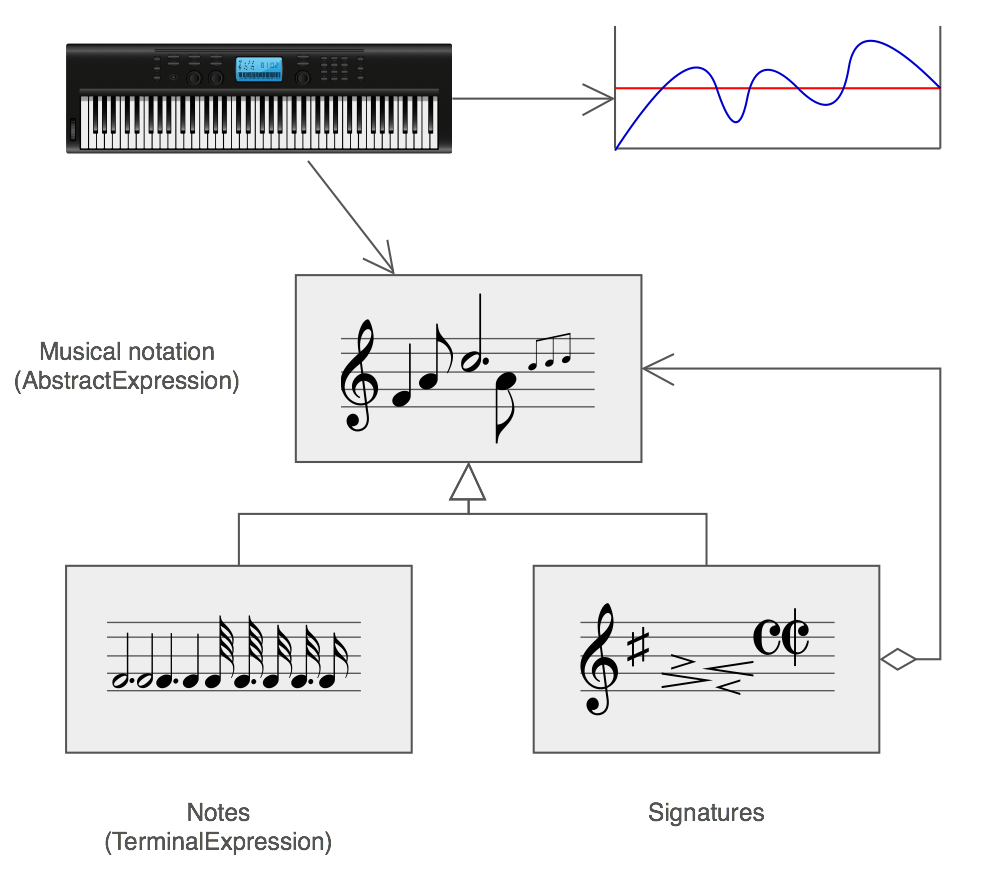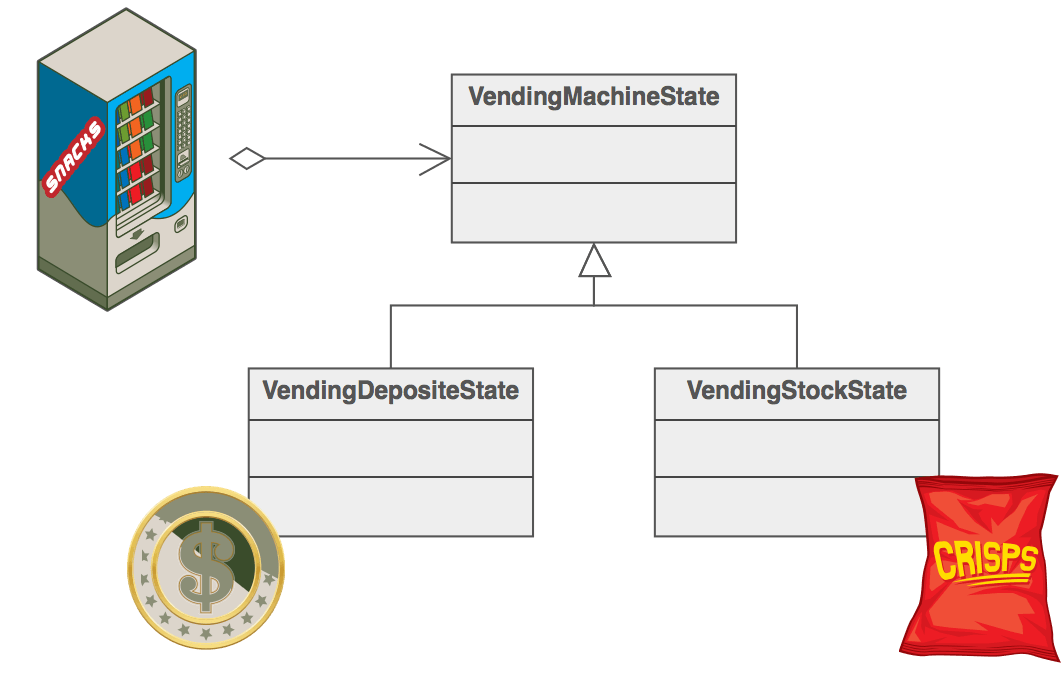Behavioural Design Patterns
In software engineering, behavioral design patterns are design patterns that identify common communication patterns between objects and realize these patterns. By doing so, these patterns increase flexibility in carrying out this communication.
- Chain of responsibility
A way of passing a request between a chain of objects - Command
Encapsulate a command request as an object - Interpreter
A way to include language elements in a program - Iterator
Sequentially access the elements of a collection - Mediator
Defines simplified communication between classes - Memento
Capture and restore an object's internal state - Null Object
Designed to act as a default value of an object - Observer
A way of notifying change to a number of classes -
State
Alter an object's behavior when its state changes - Strategy
Encapsulates an algorithm inside a class - Template method
Defer the exact steps of an algorithm to a subclass - Visitor
Defines a new operation to a class without change
Rules of thumb
- Behavioral patterns are concerned with the assignment of responsibilities between objects, or, encapsulating behavior in an object and delegating requests to it.
- Chain of responsibility, Command, Mediator, and Observer, address how you can decouple senders and receivers, but with different trade-offs. Chain of responsibility passes a sender request along a chain of potential receivers. Command normally specifies a sender-receiver connection with a subclass. Mediator has senders and receivers reference each other indirectly. Observer defines a very decoupled interface that allows for multiple receivers to be configured at run-time.
- Chain of responsibility can use Command to represent requests as objects.
- Chain of responsibility is often applied in conjunction with Composite. There, a component's parent can act as its successor.
- Command and Memento act as magic tokens to be passed around and invoked at a later time. In Command, the token represents a request; in Memento, it represents the internal state of an object at a particular time. Polymorphism is important to Command, but not to Memento because its interface is so narrow that a memento can only be passed as a value.
- Command can use Memento to maintain the state required for an undo operation.
- Macro Command can be implemented with Composite.
- A Command that must be copied before being placed on a history list acts as a Prototype.
- Interpreter can use State to define parsing contexts.
- The abstract syntax tree of Interpreter is a Composite (therefore Iterator and Visitor are also applicable).
- Terminal symbols within Interpreter's abstract syntax tree can be shared with Flyweight.
- Iterator can traverse a Composite. Visitor can apply an operation over a Composite.
- Polymorphic Iterators rely on Factory Methods to instantiate the appropriate Iterator subclass.
- Mediator and Observer are competing patterns. The difference between them is that Observer distributes communication by introducing "observer" and "subject" objects, whereas a Mediator object encapsulates the communication between other objects. We've found it easier to make reusable Observer and Subjects than to make reusable Mediators.
- On the other hand, Mediator can leverage Observer for dynamically registering colleagues and communicating with them.
- Mediator is similar to Facade in that it abstracts functionality of existing classes. Mediator abstracts/centralizes arbitrary communication between colleague objects, it routinely "adds value", and it is known/referenced by the colleague objects (i.e. it defines a multidirectional protocol). In contrast,Facade defines a simpler interface to a subsystem, it doesn't add new functionality, and it is not known by the subsystem classes (i.e. it defines a unidirectional protocol where it makes requests of the subsystem classes but not vice versa).
- Memento is often used in conjunction with Iterator. An Iterator can use a Memento to capture the state of an iteration. The Iterator stores the Memento internally.
- State is like Strategy except in its intent.
- Flyweight explains when and how State objects can be shared.
- State objects are often Singletons.
- Strategy lets you change the guts of an object. Decorator lets you change the skin.
- Strategy is to algorithm. as Builder is to creation.
- Strategy has 2 different implementations, the first is similar to State. The difference is in binding times (Strategy is a bind-once pattern, whereas State is more dynamic).
- Strategy objects often make good Flyweights.
- Strategy is like Template method except in its granularity.
- Template method uses inheritance to vary part of an algorithm. Strategy uses delegation to vary the entire algorithm.
- The Visitor pattern is like a more powerful Command pattern because the visitor may initiate whatever is appropriate for the kind of object it encounters.




No comments:
Post a Comment